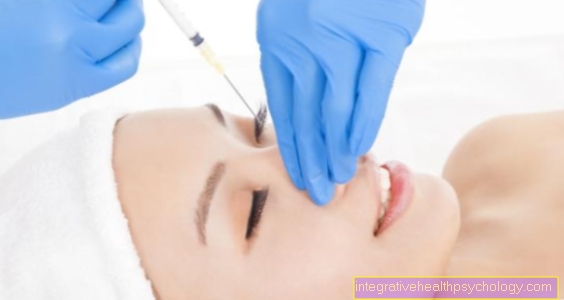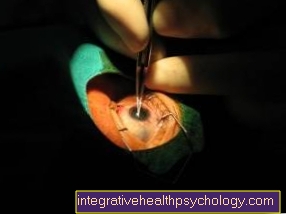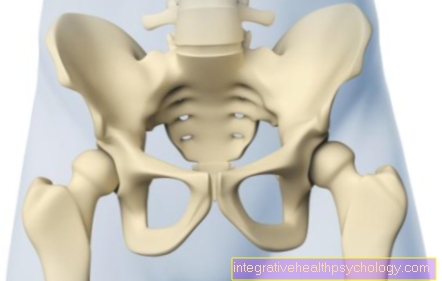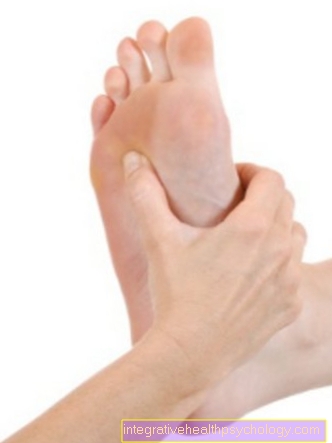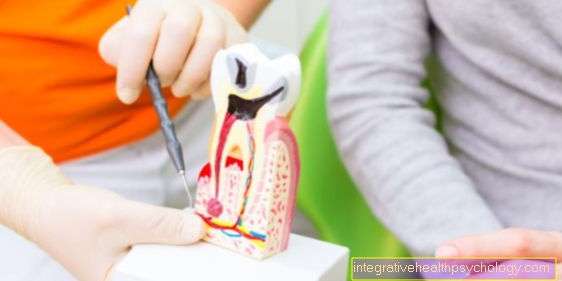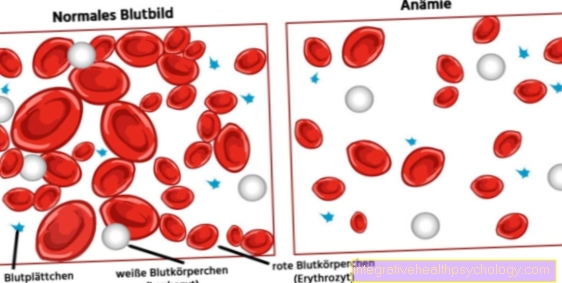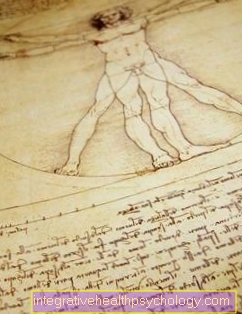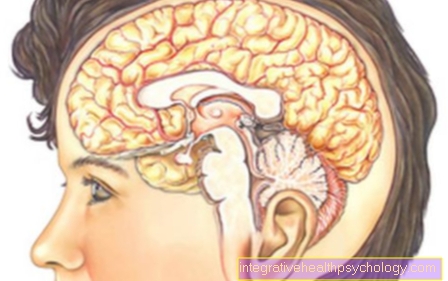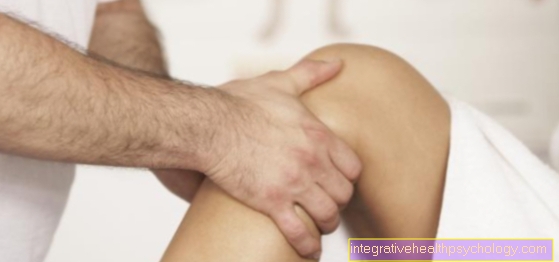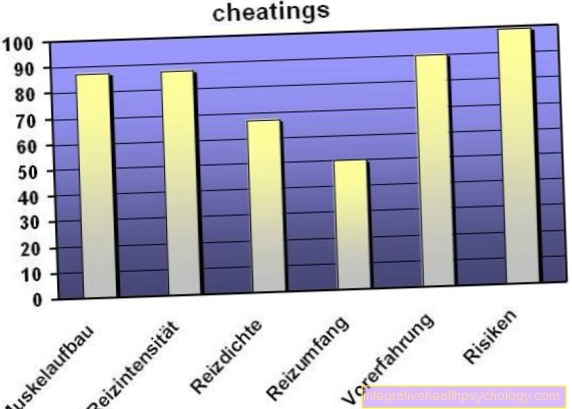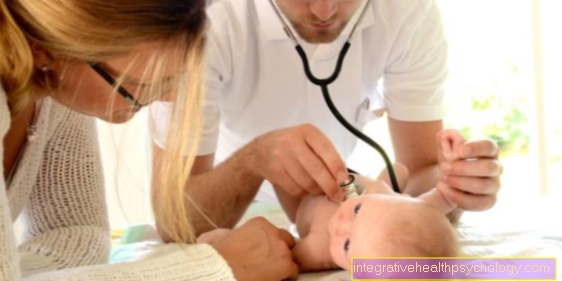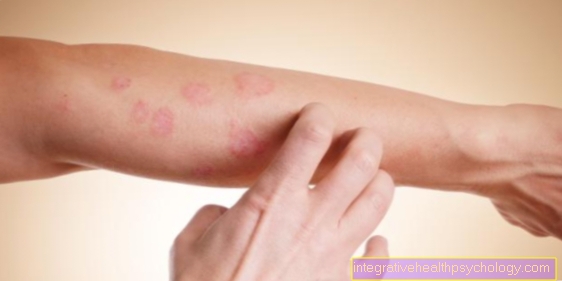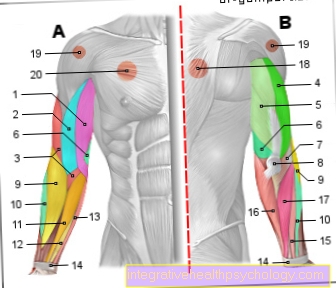Symptoms of breast cancer
General complaints
In the early stages of breast cancer, there are no characteristic symptoms that indicate the disease. The first sign most patients notice is a coarse (rough) lump in the breast, which is usually not painful. An asymmetry in the size or shape of the breasts can also be noticed. The diseased breast can be much larger than the healthy one, but small swellings are also possible. Retraction of the skin over the place where the tumor lies in the fatty tissue is also possible. This is visible from the outside as a notch in the chest.
Read more on the topic: How do you recognize breast cancer?
Most breast cancer only affects one breast, with the left breast being statistically more frequently affected than the right breast.
In some cases, there is not one large tumor in the breast, but several small ones.
Please also read our page Signs of breast cancer.

Chest symptoms
Breast lump
Breast cancer generally only shows symptoms at an advanced stage. This includes feeling for a lump or some kind of knot-shaped change in the chest. Early detection examinations try to detect changes, such as small calcifications, even before a lump develops. Nodular changes do not mean that the prognosis is bad because there are many benign breast tumors.
Malignant tactile findings are most common in the upper, outer quarter of the breast. In fact, over half of the malignant lumps are located in this section of the breast. In the case of a tactile finding, however, you should first of all stay calm and get a medical examination quickly. Benign breast lumps are far more common. These include primarily cysts and so-called fibroadenomas (benign tumors).
Chest pain
Breast cancer is often made aware of by feeling lumps in the breast. Usually these lumps are not painful and do not react with pain to pressure. However, there may also be some chest pain. These then usually have a rather dull character and are often difficult to localize. But that varies a lot from woman to woman.
At an advanced stage, the cancer can also lead to deep skin wounds. Severe pain is very typical at such an advanced stage. The skin of the affected breast can also be sensitive and sometimes painful to the touch.
Breast pain and nipple pain are common in inflammatory breast cancer. This form of cancer severely attacks the skin and, in advanced stages, causes large tissue defects and wounds.
Another specialty is the so-called Paget's disease. This cancer affects the nipple and the surrounding skin and manifests itself as itching, burning and pain in this region.
More on this topic at: What types of breast cancer are there?
Tension in the chest
Women often notice changes in their breast tissue themselves and then seek medical advice. Usually it is suspicious lumps or nodules in the breast that stand out when you feel the breast independently or during personal hygiene.
However, sometimes there are changes in body awareness and breast perception that women can only notice for themselves. This can be an uncomfortable pulling of the chest.Pulling the breast does not have to cause concern at first, as the breast tissue can also pull or push from time to time due to hormonal fluctuations.
Women usually know their cycle very well and notice when a pulling is unusual or atypical for their own breast.
It can be an indication of breast cancer, but usually there is no malignant cause behind a pull. Often they are small cysts or benign tumors that can sometimes lead to a slight pulling. Nevertheless, new and unusual symptoms should be clarified by a doctor.
Retracted nipples
One possible symptom of breast cancer is retraction of the nipple. The nipple is then no longer flat or curved outwards, as it would normally be, but rather pulls into the breast or appears indented. This symptom can be suspicious for a malignant disease and should therefore be clarified by a doctor as soon as possible.
In addition to changing the appearance of the nipple, the tumor can lead to further deformities of the breast and changes in the breast skin. Skin retractions near the nipple are also typical. Breast tumors that become symptomatic around the nipple are often Paget's disease.
More information on this subject can be found at: Breast cancer screening
The orange peel phenomenon
A possible symptom in the course of the disease can be the so-called orange phenomenon. When the cancer cells of the tumor grow into the tissue of the subcutaneous tissue, they can pull in parts of the skin with them and the skin then looks similar to the peel of an orange.
In women who are not currently breastfeeding, leaking milk from the nipple of a breast tumor can be another sign of the disease.
If the cancer is more advanced, the lymph nodes in the armpit and above the collarbone may enlarge.
Very rarely, pain can be a symptom of advanced breast cancer. Long-term reddening and overheating of the breast can occur with inflammatory breast cancer or be a sign of breast inflammation. In such cases, it is important to have an expert assess the symptoms.
Stinging in the chest
If you feel a sting in the breast tissue, there can be many causes. Only rarely is it really breast cancer. In the far more common cases, the female cycle is responsible for the stinging. Due to the hormonal course of the cycle, the breast tissue is subject to constant change. This can sometimes lead to light stinging or pulling. Cysts or benign fibroadenomas can also cause the stinging. This is particularly the case with young women.
For more on this, see: Signs of Breast Cancer
Some women with breast cancer have reported a stinging sensation in the breast. This stinging can be felt, unlike a heart attack, in the breast tissue and not in the chest. The feeling is usually caused by the fact that the cancer is displacing other breast tissue. This can not only lead to a stinging, but also dull pain.
Perception of the sting is very subjective and is recommended differently by every woman. Many women do not even notice their illness for a long time and are diagnosed by chance during the screening examination or at the gynecologist. Stinging in the breast tissue can also occur in the absence of disease.
It is very important that a stinging in the chest is not prematurely associated with a malignant diagnosis. Most women experience stinging in the breast tissue every now and then.
However, if the stinging occurs again and again in the same place, is very strong or unfamiliar to the person concerned, a cancer could be hidden behind it.
Additional symptoms, such as nodular changes in the breast, retraction of the nipple, secretions from the nipple, and changes in the size of the breast, reinforce the suspicion. Therefore, to be on the safe side, you should consult a gynecologist and have the sting checked. However, a stinging in the chest, such as is known from heart or lung disease, is not typical of breast cancer.
Burning as a symptom
The perception of symptoms is often very subjective. One tries to summarize frequent and impressive symptoms for a disease so that one can orientate oneself on this clinical picture. This makes it easier to assign causes to symptoms and to find the right diagnosis. With breast cancer, however, the way the breast feels is very individual. While a burning sensation is not a common symptom, it can occur in breast cancer.
Burning of the breast skin and nipple, for example, is a very typical symptom of Paget's disease. It is often not easy to tell whether it is burning, pain or stinging. Everyone perceives these sensations a little differently. The decisive factor is the subjective feeling of a change in the breast tissue.
Fluid leakage as a symptom
Bloody discharge from the chest is common in inflammatory diseases of the chest. Bloody or unilateral secretions from a nipple can also indicate a possible breast cancer. The bloody secretion is not always red, sometimes the secretion can be dark brown or black.
If such changes occur, however, further clarification with the treating gynecologist is always advisable and sensible.
Symptoms on the nipples
In some breast tumors, the degeneration arises in the area of the glandular tissue of the milk ducts around the nipple.
The tumors behind the nipple can cause the nipple to retract. The tumor that grows behind the affected nipple "pulls" the nipple along with it in its growth direction into the subcutaneous fatty tissue.
This form of cancer usually does not present itself as lumps or hardening of the breast, but rather as unilateral, crusty and reddish-scaly changes on the skin surface, i.e. one nipple and one breast, which initially suggest inflammation of the skin or eczema.
This scaly "inflammation" typically begins in the area of the nipple and gradually spreads from there to the surrounding breast skin. In the course of the disease, the nipple retraction that is typical of breast cancer often occurs.
Crusty and scaly changes on the skin surface of the breast can also occur with more harmless skin diseases and should be clarified by a gynecologist.
Illustration breast cancer

Breast Cancer - Breast Cancer
(Malignant tumor of the mammary gland)
- Axillary lymph nodes -
Nodi lymphoidei axillares - Lymph vessels -
Vasa lymphatica - Milk duct -
Lactiferous duct - Lobule of the mammary gland -
Lobuli glandulae mammariae - Adipose tissue -
Corpus adiposum mammae - Cancer cell -
Cell with altered genetic material
(Mutated cell) - Nuclear body -
Nucleus - Cell wall
Breast Cancer Symptoms:
a - Enlarged lymph nodes
b - lump in the chest
c - fluid leakage
from the nipple
d - skin dimples in the chest
e - change in color,
Size, shape of the chest
A - ductal carcinoma
(80%) - milk duct cancer, developed
located in the cells of the milk ducts
A1 - Paget's carcinoma -
a ductal carcinoma develops
especially in the nipple tissue
B - Lobular carcinoma
(15%) - lobular cancer,
arises in the mammary gland lobules
You can find an overview of all Dr-Gumpert images at: medical illustrations
Arm pain as a sign of breast cancer
Arm pain is not a classic symptom of breast cancer. Often the disease is not painful anyway. However, when pain does occur, the perception of it can be very subjective. Some people also describe pulling into the arm or a kind of pain in the arm.
If you have the feeling that the chest feels different than usual and the arm on the affected side hurts, you should have this checked out by a doctor.
Arm complaints are more typical after breast cancer surgery. In addition to breast cancer, lymph nodes in the armpit are usually removed as the cancer spreads through these lymph nodes. The removal of the lymph nodes can lead to congestion of the lymph.
This can lead to swelling and pain in the affected arm. However, with today's procedures and good aftercare using lymphatic drainage, the risk of such lymphedema is rather low.
More information on this topic under: Irradiation for breast cancer
Itching as a symptom of breast cancer
Itching might not sound like a typical symptom of breast cancer at first. Itching is more likely to be associated with skin diseases, which is why breast cancer does not come directly to mind. However, itching of the breast skin and nipple may be suspicious of a malignant cause. A special form of breast cancer, called Paget's disease, causes long-lasting itching in this region. It is often confused with eczema of the nipple and is therefore often incorrectly treated and misdiagnosed with various creams. It is advisable to see a gynecologist if itching of the breast or nipple occurs for an unusually long time.
Fatigue as a sign of breast cancer
In advanced stages, breast cancer can also lead to so-called accompanying symptoms. These include symptoms such as fever, fatigue, tiredness and night sweats.
Chemotherapy drugs can also lead to fatigue and exhaustion in the course of tumor therapy. Fatigue can also occur as a result of the psychological stress of such a disease.
What are the symptoms of metastases?
Breast cancer metastasizes in two different ways. On the one hand via the lymphatic system and on the other hand via the bloodstream. This can lead to either lymph node metastases or metastases from various organs and bones. These lead to different symptoms.
First, metastasis occurs via the lymph nodes. This is usually not noticeable symptomatically. At most, swollen lymph nodes can be felt as small nodules in the armpit area. They are usually not painful and are not sensitive to pressure. At this point, when the cancer has spread to the armpit lymph nodes, the bloodstream will also be invaded.
This creates metastases in the bones, lungs and liver. Typical symptoms of bone metastases are lower back pain and broken bones. An attack on the liver can cause abdominal pain and liver dysfunction. This disorder of organ function can manifest itself in jaundice (jaundice). The lung involvement can manifest itself as chest pain, painful breathing, shortness of breath and coughing. Other organs, such as the brain and spleen, can also be affected. In principle, many other symptoms are conceivable as a result.
Back pain and breast cancer
Back pain is one of the possible symptoms of breast cancer. However, they are not caused by breast cancer as such, but by bone metastases. These usually only occur in the advanced stage of the cancer, when it has already spread to the lymphatic and bloodstream.
Bone metastases can in principle occur in any bone and cause discomfort, but infestation of the spine and sacrum is very common in breast cancer.
But not only the metastases as such lead to lower back pain, but in extreme cases also bone fractures, which can occur more easily with bone metastases than with healthy bones.
What are the symptoms of a relapse?
A relapse, that is, a recurrence of the disease, is the greatest fear of former breast cancer patients. The most frequent relapses occur within 3 years after therapy. They can appear as tumors in the breast or as distant metastases in various organs.
The symptoms that a relapse can cause are therefore very different. Similar to the primary disease, i.e. the first breast cancer, symptoms of the breast can occur. These include lumpy changes, breast pain, skin changes, retraction of the nipple, secretions from the nipple, orange peel, changes in the size of the breast and redness of the skin. However, the relapse can also manifest itself in a wide variety of distant metastases.
Possible symptoms include:
- Bone pain,
- Back pain, abdominal pain
- or fatigue for a long time.
Symptoms of breast cancer while breastfeeding
During the stages of pregnancy and breastfeeding, the breast changes continuously. The hormonal influences, among other things, lead to an increase in the mammary gland ducts, so that the breast can be swollen and feel a bit hard.
Please also read our article on this Swelling of the chest
Some women will notice breast lumps at the end of pregnancy and while breastfeeding. These are usually soft and movable and are usually not a cause for concern.
In order not to overlook breast cancer or to delay a possible diagnosis, expectant and nursing mothers should always seek advice from a gynecologist if they notice lumps in their breasts. A doctor should be consulted in particular if lumps are palpable for a long time, the skin of the breast changes, the nipple has suddenly retracted, there is repeated blockage or inflammation of the breast tissue (mastitis) or the child suddenly has one side while breastfeeding refused.
About one to three percent of all breast cancer diagnoses are made during pregnancy or while breastfeeding. Whether a woman can continue to breastfeed her child after a breast cancer diagnosis depends on the stage and the therapy and must be decided individually. However, breastfeeding is usually not recommended during breast cancer therapy. After cancer therapy, you can generally breastfeed. Whether breastfeeding is possible, however, depends on the type and effects of the therapy and the associated adequate milk production.
Symptoms of breast cancer in men
Breast cancer can affect men as well as women.
Although proportionally they are affected much less often than women, they also have, among other things, a small amount of breast tissue from which the cancer can develop.
A genetic predisposition, i.e. close relatives suffering from breast cancer, exposure to high-dose radioactive radiation, and increased endogenous estrogen production are known risk factors. The latter is mostly seen in men with severe liver disease.
The symptoms are similar to those of female breast cancer. Those affected often notice the first sign of a firm, immovable lump in the breast or a hardening in one of the two breasts.
Read more on the subject at: Lump in the man's chest
In addition, there may be secretions of fluid from the nipple on the affected side. These secretions are often bloody, which is a warning sign of possible breast cancer.
Some of the sick men also observe retraction of the skin in the area of the lump and / or inflammation or wounds on the affected side of the chest, which heal with difficulty or not at all.
Advanced breast cancer can also migrate to the regional lymph nodes in men. This manifests itself in the form of lymph node swellings / enlargements, which can be felt as such, especially in the depth of the armpit of the affected side.
Read more on the subject below How do you recognize breast cancer in men?
Chest quadrant
Doctors divide the breast into four sections in order to better describe the location of the breast cancer. The division of the breast is done by imaginary drawing a horizontal and a vertical line through the nipple, with the nipple in the middle.
With this classification, a statement can now be made about where the breast cancer occurs. 55% of breast cancer is in the upper outer quadrant. Cancer in the other three quadrants is less common, but possible. About 15% of all breast cancers develop behind the nipple.
Read here how to use these quadrants in a Self-examination for breast cancer can feel.
Symptoms of terminal breast cancer
Is the Breast cancer advanced, there is a great risk that the tumor will spread throughout the body and form deposits in different parts of the body. Doctors then speak of one Metastasis of breast cancer. The tumor can spread in two ways. On the one hand via the lymph vessels to the lymph nodes, on the other hand via the blood vessels to various organs - mostly in the bones, lungs and liver, and more rarely, among others. in the brain, skin, ovaries and spleen.
Depending on where you are Metastases form, step different symptoms on. A Lymph node involvement can to Swelling, Pain and abnormal drainage of the lymphatic fluid in the affected area.
Bone metastases often occur in the field of Spine and ribs up and can there Pain and sudden fractures cause.
At Lung metastases can it to Cough and shortness of breath come. Liver metastases often lead to symptoms late. Since the liver has many different functions, the Symptoms varied and weight loss, digestive problems or the build-up of ascites may occur. This is noticeable through rapid weight gain and a suddenly larger waist size.


